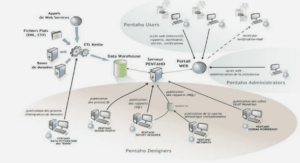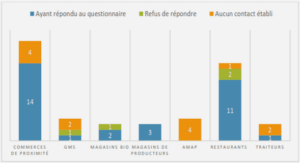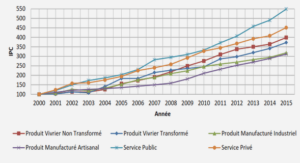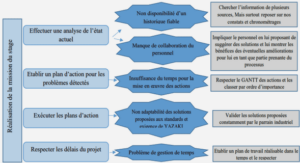Neighbouring and self-organizing small-cells networks
Since small-cells may be directly deployed by the users, in some cases without any coordination from the macrocell, the two concepts of neighbouring cells and self-organizing networks (SON) are essential for successful small-cells deployments. A self-organization is a concept used in many different fields and the technical specifications of SONs have been standardized in LTE and LTE-A systems by 3GPP in release 8 and 9 (standard3gpp). The basis of a self-organizing system is its autonomous and intelligent adaptivity, i.e., its ability to respond to external environment changes (Anpalagan et al., 2015). Another important property of SONs, is the distributed control where each node in the network has to take individual decisions on its own. In particular, for small-cells networks self-organizing features allow them to detect the environment changes and take decisions by interacting locally with each others.
The neighbouring concept is closely related to SON operations. Indeed, self-organization of a cell usually takes the parameters of neighbouring cells into account. For instance, self16 organized inter-cell interference mitigation requires neighbouring cells informations to reduce coverage overlap while supporting seamless handovers. Two types of neighbouring concept are possible. Firstly, a centralized scheme where a global entity acting as a head cluster is in charge of gathering informations from the neighbouring cells and optimizes the relevant parameters based on these informations. Secondly, a distributed scheme where the neighbouring cells communicate directly with each other and optimize their own parameters based on local sensing and optimizing techniques. In conclusion, neighbouring small cells are deployed by the users in residential areas or in small businesses. Since the end users do not have any understanding of cellular technology or network optimization, it is essential that these small cells support a sophisticated set of SON features that allow them to configure and optimize themselves continuously.
Spectrum arrangement in multi-tier systems
Spectrum sharing among macrocells and small-cells in a network are generally classified into two groups. One method used to suppress the cross-layer interferences is to split the spectrum in two parts: one dedicated to the macrocell users and the other to the small-cell users, this is the orthogonal channel assignment. The drawback of this method is the low spectrum reuse as it has been shown in (Ghosh et al., 2010). Therefore, co-channel assignment of the macrocell and femtocell layers seems more efficient and profitable for operators, although far more intricate from the technical point of view. Indeed, if the spectrum is shared by entities from different tiers with different levels of power transmission, the network system will meet several challenges related to the interferences issue. First, the deadzone problem induced by a MUE’s larger power inhibiting the uplink of nearby small cells. The deadzone problem in the downlink is also critical when the signal received by a MUE located in the boundary of the cell is corrupted by the downlink transmission of surroundings SBSs. Second, the inappropriate scheduling: because of the dynamic scheduling of HeNBs and the constant change of co-channel interference, cooperation is needed among macrocell BS and HeNBs. Under a co-channel approach, Wu et al. (2009) develop a new scheme for femtocell-aware spectrum arrangement.
The paper describes a method to coordinate the use of the spectrum between macrocells and femtocells. This is done by a scheduling algorithm, through the gathering information from the MBS about the femtocells spectrum use. The MBS creates a pool of MUEs that may interfere with nearby HeNBs. A certain part of the spectrum is dedicated to those MUEs, while the other part of the spectrum is shared by FUEs and MUEs. This can help to reduce significantly the uplink cross-tier interference (Saquib et al., 2012). In (Estrada et al., 2013), the authors determine the distance dim between an MBS and a MUE as a radius surrounding the MBS inside which the MUEs may suffer from high degradations from the FBSs. They identify the number of FBSs than can reuse the subcarriers allocated to the macro-tier according to dim, without degrading the MUEs QoS. The performance analysis is achieved in terms of spectrum efficiency, throughput and outage probability of MUEs and FUEs are compared to the existing models. Both co-channel and split-spectrum approaches are studied in this thesis and different methods are proposed to reduce interference and enhance capacity. In the next sub-section, we present the most commonly used orthogonal spectrum allocation approach: fractional frequency reuse.
Fractional frequency reuse in HetNets
In order to explain the principle of frequency reuse, it is essential to start by reminding one of the fundamentals of cellular networks. When only a single transmitter is available in a large area, a high power of transmission is necessary to reach every user in the given area. Hence, one single transmission is possible per frequency which reduces significantly the number of users possibly supported by the network over the geographic of the single transmitter coverage area. To overcome this major limit, frequencies allocated to mobile networks are reused in a regular areas, i.e. cells, each covered by a single base station: this is the principle of frequency reuse for cellular networks (Rappaport, 2009). OFDMA-based systems suffer more from inter-cell interference than CDMA-based cellular systems or others, hence FFR is one of the frequency planning techniques proposed for LTE systems to mitigate the inter-cell interference. This scheme is mainly based on the partition of a cell into several regions and the application of a different frequency reuse factors in each one. There are two major frequency reuse patterns for mitigating inter-cell interference: FFR and soft frequency reuse (SFR). In FFR, the spectrum is divided into two parts. One half is allocated to the inner region of every cell of the system.
The second half is divided into three distincts subparts (or a number of subparts equal to the reuse factor) and allocated to the edge ring of contiguous cells as depicted in Figure 1.5. In SFR, the overall bandwidth is shared by all base stations (i.e. a reuse factor of one is applied), while cell-edge users transmit at lower levels than cell-center users in order to reduce interference with neighbouring cells as depicted in Figure 1.6 In frequency reuse schemes, the location of the users within a cell is essential with regard to decide on which part of the spectrum is dedicated to it. One practical method to determine the location of users is to use the average SINR of the users in a cell, which gives us an indicator of the user’s distance from their base station. The base station defines a threshold: if the SINR is less than the threshold the user is classified as cell-edge user, and if the SINR is greater than the threshold the user is classified as cell-center user. Owing to FFR, macrocells and overlaying femtocells do not operate in the same frequencies, therefore avoid cross-tier interferences. In (Lee et al., 2010b), under the macrocell allocating frequency band by the FFR, the femtocell chooses sub-bands which are not used in the macrocell sub-area to avoid interference.
Power Control under Co-channel Assignment Despite the orthogonality within a cell in OFDMA systems, users still suffer from interferences. Indeed, when neighbouring cells allocate the same time-frequency resource blocks, they cause interferences among users. The most affected are the cell-edge users in the downlink transmission since they are almost equidistant from two base stations and suffer from low desired power and high interference power (Ghosh et al., 2010) . We have studied above interference-aware allocation approaches to mitigate the interferences, we will now discuss the power control approach as a solution to the interference issues. In a two-tier network, the traditional power control schemes are not sufficiently efficient and robust. For instance, the channel inversion employed by users causes considerable deterioration of small-cell SINR. This is due to the high power of transmission of cell edge users that causes cross-tier interference to the surrounding small-cells. Instead of allocating a fixed HeNBs power recent papers focus on the dynamic power control, although is not straightforward in OFDMA systems since it requires accurate measurements of all gains in all radio links. A number of research works focuses on power control algorithms for OFDMA small-cells networks. In the uplink, power control schemes for FUEs have been proposed in (Jo et al., 2009), in order to adjust the maximum uplink transmit power Pmax as a function of the cross-tier interference level in an open-loop and closed-loop technique.
In the open-loop, the femtocell estimates the additional cross-tier interference to the MBS due to the FUEs and adjusts the maximum transmit power in the way that it does not reach the maximum acceptable interference level. In the closed-loop control a femtocell adjusts the maximum transmit power Pmax as a function of the additional cross-tier interference to the MBS due to the femtocell user and as a function of the level of noise and uplink interference at the MBS. In the downlink, various interference mitigation strategies for OFDMA-based small-cell networks, based on hybrid co-channel assignment and power control have been recently developed . Hybrid interference management schemes which combine power control with resource partitioning are promising. Power control schemes are important in that MBSs and SBSs can use the entire bandwidth with interference coordination. For this purpose, the HeNB should be capable of identifying the users to which it causes degradations. However, this scheme is not efficient when a MUE is located very close to a FBS since the user will suffer from strong interferences. With split spectrum approaches, interference between MeNB and HeNB can be eliminated, nonetheless, multiple frequency bands are required. Both approaches can be then exploited in a hybrid scheme, to make a complete design responding to various problems encountered in HetNet. In the hybrid approach, the entire bandwidth is split into 2 sets: one set of subchannels dedicated to the MUEs and one set of subchannels shared by MUEs and FUEs. Inside the set of shared subchannels, the subcarriers of one subset are allocated with upper power, and the subcarriers in the other subset are allocated with power by water-filling. Pao et al. (2013) have considered the method of water filling power allocation for cross-tier interferences mitigation. The upper power limit is defined as transmit power limit for a FBS in a subcarrier to ensure a the QoS requirements of its neighbouring MUEs. The aim is then to find the users to which the dedicated part of the sub-carriers is allocated and the users using the same frequencies with power control.
|
Table des matières
INTRODUCTION
CHAPTER 1 DENSE DEPLOYMENT OF SMALL-CELLS: MOTIVATIONS AND CHALLENGES
1.1 Small-cell networks: a necessary paradigm shift
1.1.1 Explosion of data traffic in wireless networks
1.1.2 Small-cell heterogeneous network deployment
1.1.2.1 Small-cells overview, motivations and operation
1.1.2.2 The access modes of small-cells
1.1.3 Role in 5G and success factors of network densification
1.1.4 Conclusion and discussions
1.2 Technical challenges of dense deployment of small-cells
1.2.1 Co-existence with macro-cellular network and interference management in small-cells based networks
1.2.1.1 Co-tier interference
1.2.1.2 Cross-tier interferences
1.2.2 Mobility management and handover
1.2.3 Neighbouring and self-organizing small-cells networks
1.2.4 Conclusion and discussions
1.3 Interference and resource management in small-cells heterogeneous networks
1.3.1 Interference avoidance and spectrum partitioning in two-tier networks
1.3.1.1 Spectrum arrangement in multi-tier systems
1.3.1.2 Fractional frequency reuse in HetNets
1.3.2Interference and resource management approaches for OFDMAbased HetNets : a literature review
1.3.2.1 Resource Allocation Optimization Problems
1.3.2.2 Power Control under Co-channel Assignment
1.3.3 Resource management in self-organizing small-cells networks
1.3.3.1 Distributed and Cognitive approaches for Self- Organizing Small-cells HetNets
1.3.3.2 Cluster based resource management in OFDMA Small-Cells Networks
1.3.4 Call admission control in small-cells HetNets
1.4 Game theoretic approaches for resource management in HetNets
1.4.1 Applications of game theory in wireless communications and networking
1.4.2 Coalitional and canonical games and their applications
1.5 Recent opportunities: small-cells deployment in the mmWave spectrum
1.6 Conclusion of chapter I and proposed research plan
CHAPTER 2 QOS-AWARE ADMISSION CONTROL FOR OFDMA FEMTOCELL NETWORKS UNDER FRACTIONAL FREQUENCY-BASED ALLOCATION
2.1 Introduction
2.1.1 Motivation and prior related work
2.1.2 Main contribution and organization
2.2 System model of the proposed FFR
2.2.1 QoS constraints
2.3 LTE resource blocks specifications
2.4 Admission control policy
2.5 Performance analysis
2.5.1 Mobility and handover in out of the two-tier network
2.5.1.1 Teletraffic flow coefficients
2.5.1.2 Calculation of handoff arrival rates
2.5.2 Stationary analysis of Markov chains ΔM1(t) and ΔM2(t)
2.5.2.1 Calculation of transition rates
2.5.2.2 Calculation of the blocking probabilities
2.5.3 Stationary analysis of Markov chains ΓF1 and ΓF2
2.6 Numerical results
2.6.1 Results on the best parameters for resource partitionning
2.6.2 Performance results in terms of blocking probability
2.7 Conclusion
CHAPTER 3 COALITIONAL GAMES FOR JOINT CO-TIER AND CROSSTIER COOPERATIVE SPECTRUM SHARING IN DENSE HETEROGENEOUS NETWORKS
3.1 Introduction
3.1.1 Motivations and prior related works
3.1.2 Main contributions and organization
3.2 Problem formulation and motivations
3.3 System model
3.3.1 Interference set detection
3.4 Cross-tier macrocell-smallcells cooperation as coalitional games
3.4.1 Proposed game theory approach
3.4.2 Definition and formulation of the game
3.4.3 Non-emptiness of the core and stability of the grand coalition
3.4.4 The proposed canonical game
3.4.4.1 Imputation value for the canonical game
3.4.5 The proposed coalition structure game
3.4.5.1 The weighted Owen value as the imputation value of the CS game
3.5 Simulation results and analysis
3.5.1 Computational complexity
3.5.2 Comparison with other schemes of the art
3.5.3 Comparison with other types of access
3.5.4 Comparison with other cooperative game solutions
3.5.5 Impact of interference degree and user demands
3.5.6 Performance analysis of the proposed Weighted Solidarity value
3.5.7 Performance evaluation in terms of fairness
3.6 Conclusion
CHAPTER 4 TOWARDS 1GBPS IN ULTRA-DENSE SYSTEMS : A SPATIAL FREQUENCY REUSE MODEL FOR SMALLCELLS BASED MMWAVE NETWORKS
4.1 Introduction
4.1.1 Motivations and prior work
4.1.2 Main contributions and organization
4.2 System model
4.3 Tractable framework on coverage probability
4.3.1 Coverage analysis of the macro-tier
4.3.1.1 In the macro-tier center zone
4.3.1.2 In the macro-tier edge zone
4.3.2 Coverage analysis of the smallcell-tier
4.3.2.1 Center zone of small-cells
4.3.2.2 Edge zone of small-cells
4.4 Single user-throughput analysis
4.5 Performance evaluation with accurate large-scale distant-dependent pathloss models
4.5.1 Path loss model for millimeterwave bands
4.5.2 Proposed algorithm for BS association and SINR computation
4.5.3 Instantaneous rate computation of a typical user
4.6 Numerical results
4.6.1 Validation of the proposed model
4.6.2 Coverage comparison with other systems
4.6.3 Results on user throughput analysis
4.6.4 Simulation results on throughput using the accurate path loss models
4.7 Conclusion
CHAPTER 5 DISCUSSION AND RECOMMENDATIONS
5.1 Discussion on future challenges for resource management in 5G networks
5.2 Recommendations and potential approaches for further research
GENERAL CONCLUSION
APPENDIX I APPENDIX OF CHAPTER 3
APPENDIX II APPENDIX OF CHAPTER 4
BIBLIOGRAPHY
![]() Télécharger le rapport complet
Télécharger le rapport complet




